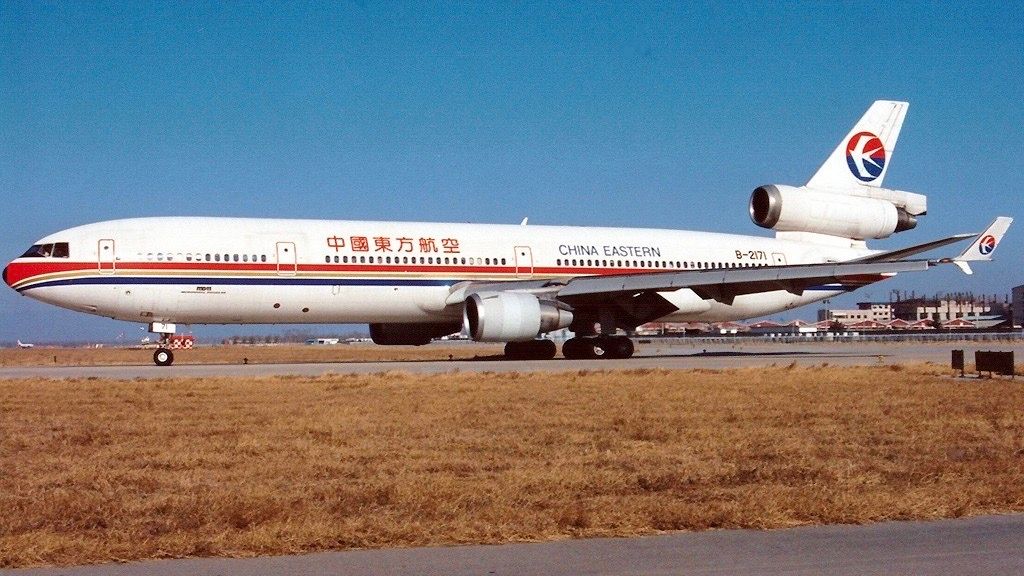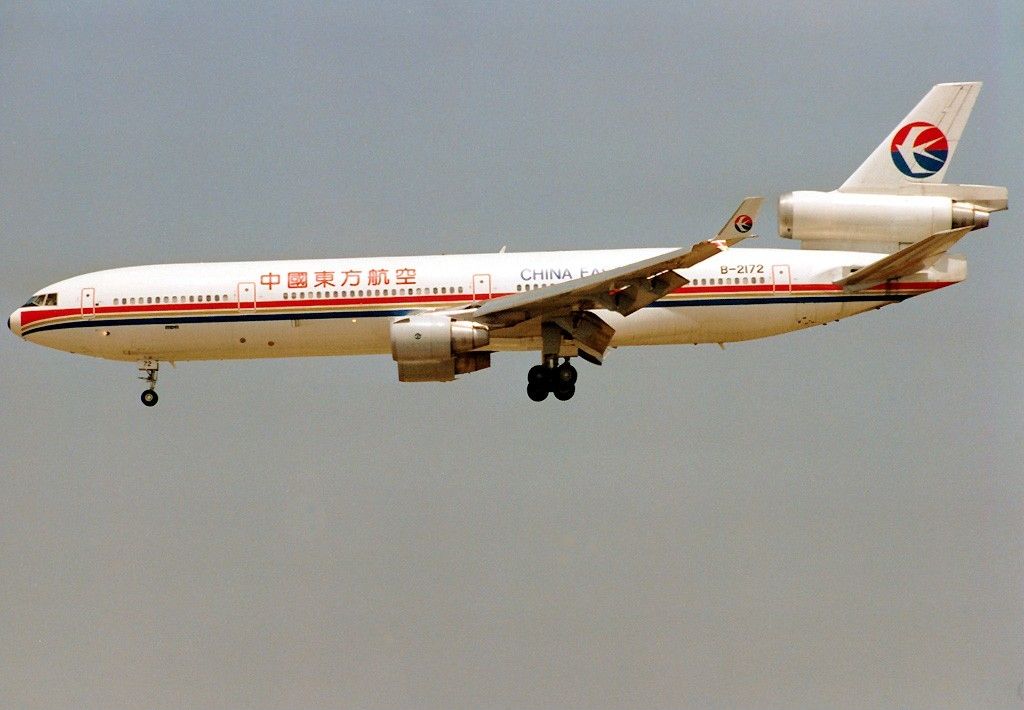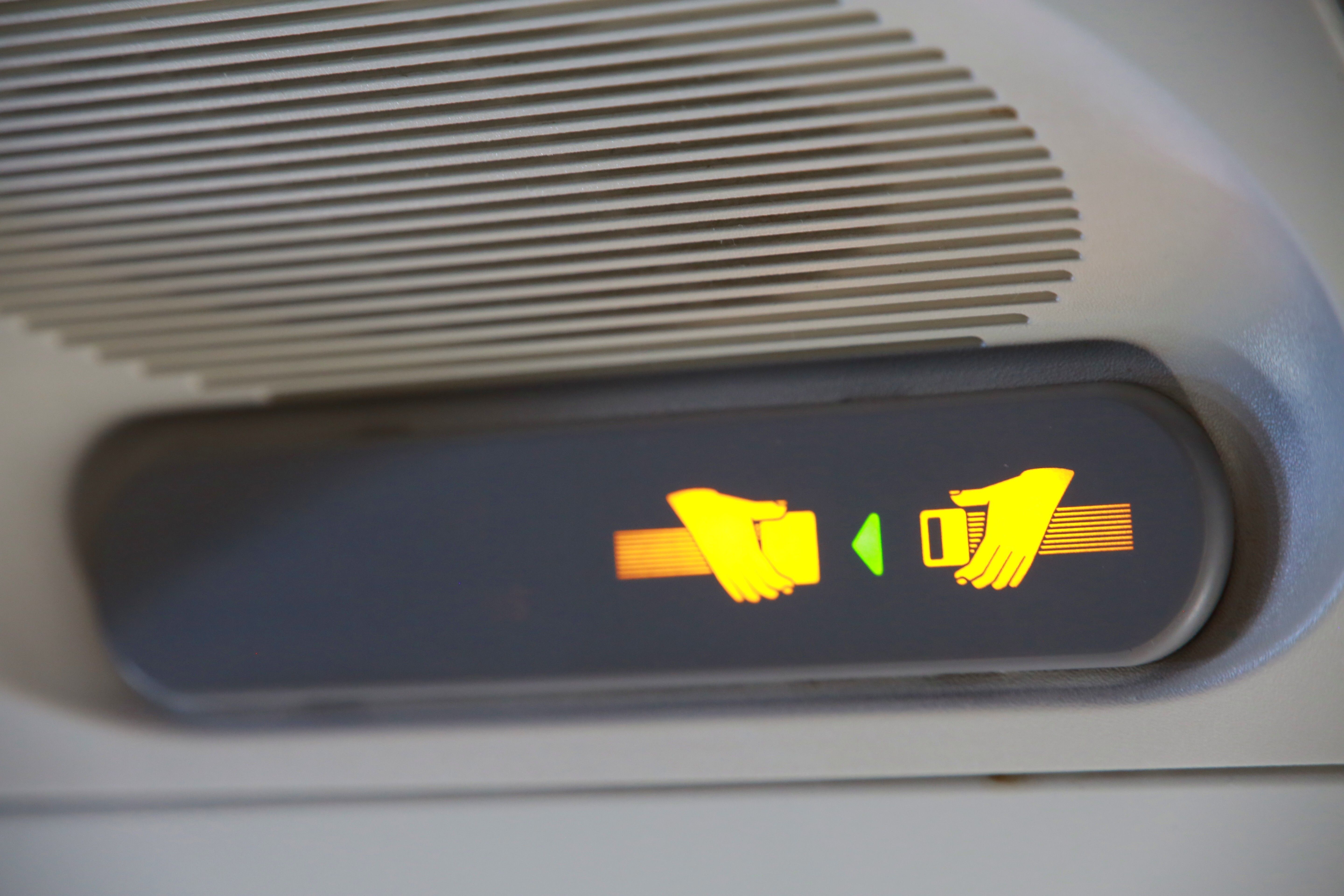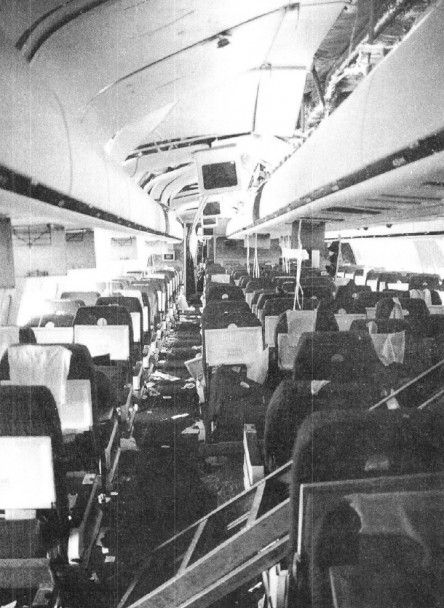On April 6th, 1993, China Eastern Airlines Flight 583 departed from Hongqiao International Airport, Shanghai, China, bound for Los Angeles International Airport, United States. The flight had already completed the first part of its journey from Beijing, China. The McDonnell MD-11 had 235 passengers onboard and 20 crew.
The crew
In the flight deck sat the captain, first officer, flight engineer, and a radio operator. There were also multiple relief crew members for the international flight. There were 12 flight attendants on that day, one being lead flight attendant Li Na Li. She was young and attractive and loved to travel and see the world. Li was married with a young child. She had noted how much baggage was stuffed into the overhead lockers and forcibly had to close one locker with her fist.
Smooth flight
The flight had been reasonably uneventful for the first five hours. Flight attendants had completed the meal service and dimmed the cabin lights so the passengers could sleep or watch a movie comfortably. Everything was going smoothly, and the seatbelt sign was off; there was no sign of turbulence or poor weather. They were cruising steadily across the Pacific Ocean. Some passengers unfastened their seatbelts, and some were standing in the cabin. Flight attendants onboard quietly continued their duties.
In the flight deck
Up front, the relief crew had just taken over 20 minutes prior. The captain flying was sat in the right-hand seat instead of the usual left seat. He noticed that a speed indication was not displaying correctly and tried to fix it.
They thought there was a little turbulence, but in fact, someone had accidentally deployed the slats. The stall warning stick shaker activated, and the slat over speed warning chimed.
Out of control
At 01:10, the deployment of the slats caused the nose to pitch up. The captain returned the handle to the correct position to try and correct the aircraft’s pitch. He pushed the control column forward, causing the autopilot to disengage. The aircraft continued to oscillate nose-up and nose-down because of the overcorrection of the elevator inputs. In 13 seconds, there were four oscillations, and they lost a total of 5,000 feet in altitude before stabilizing the aircraft.
Complete chaos
There was no sign of anything amiss, and the oscillations seemingly came out of the blue. The fasten seat belt sign came on during the second oscillation. The cabin was in complete chaos as the aircraft made violent pitching movements. Passengers and crew who were not wearing seatbelts were lifted to the ceiling and thrown about the cabin, on the floor, in the aisle, or on top of other passengers. They fell against armrests, seat backs, and fellow travelers. The economy section was most affected. The overfilled overhead lockers burst open, spilling their contents all over the cabin and injuring more. The pre-flight safety video ominously played three times.
Turbulence?
One of the flight attendants at door two left rushed to catch the interphone but was pressed heavily against the floor. The two flight attendants at the front instinctively shouted, ‘Turbulence! Fasten seat belt!’
Photo: Mike Kuhlman/Shutterstock
The flight attendant at door two left managed to get to the interphone and announced, ‘Turbulence occurred due to unsteady air flow, please fasten seat belts and do not use washrooms.’ Everyone was subject to severe positive and negative G forces during the oscillations.
Looking after the injured
Once the aircraft steadied, the flight attendants who were able to do so began providing first aid. Both first aid kits were found empty, and their used contents were scattered around the cabin. The flight attendants put three people on oxygen, although two of the bottles were not working, and one was empty. An off-duty doctor was helping the injured in the cabin. Some of the passengers started smoking in the cabin. The galleys and cabin were bloodstained.
Cabin damage
The cabin was damaged extensively. Seats ranged from slightly deformed to completely collapsed. The passenger service units had impact damage where they were struck by passengers and were displaced or pushed back into their mounting.
Twenty oxygen masks were deployed because of the damage. Ceiling panels in the forward economy section and all of the rear cabin were damaged, some displaced upwards. 80% of the ceiling cross-beams were separated or bent. Seven monitors were damaged.
Injuries and fatalities
One passenger had been fatally injured, and another succumbed to his injuries a week later in the hospital. Both had severe head injuries. 149 passengers and seven crew were injured. Some had life-threatening head injuries; one passenger was paralyzed. Other injuries included spine and rib fractures and cuts and bruises. Four of the flight attendants had severe injuries. Li, the lead flight attendant, had been thrown around the galley and had suffered severe brain damage. She had been slammed into the ceiling and floor.
Emergency landing
There was no external structural damage to the aircraft, but because so many were injured, they asked to be diverted to the nearest airport, which was Shemya US Air Force Base on the Semichi Islands in Alaska. The radio operator requested for a diversion at 01:23 and spoke to a Honolulu ARINC communications specialist. At 01:25, the radio operator confirmed they had several injured passengers onboard due to ‘severe turbulence’ and declared an emergency. ARINC transmitted the request to Oakland Air Route Traffic Control Center.
The aircraft was airborne for another 2 hours after the upset, and the flight crew dumped fuel en route to reduce the aircraft’s landing weight. The aircraft landed safely at Shemya.
The US Air Force, Coastguard, and Navy provided aircraft to evacuate the injured to four hospitals in Anchorage. The crew and passengers who did not require medical attention stayed in Shemya for 30 hours before flying to Anchorage on another China Eastern MD-11 to meet them. Those released from the hospital joined this flight and continued to Los Angeles.
Root cause
The NTSB stated that the handle used to activate the leading edge slats was poorly designed, and there had been 11 similar incidents prior on the MD-11. In this case, the captain had likely nudged the handle unintentionally while trying to fix the speed indication. Lack of pilot training in high altitude upset recovery and the influence of the stall warning system during the oscillations were secondary factors. They also noted that injuries would have been lower if passengers had kept their seatbelts on while seated.
Li was so badly brain-damaged she was confined to a Shanghai hospital with the functionality of a child. Later, in December 1994, she was moved to a hospital in Los Angeles, where she had rehabilitation, and her condition and quality of life fortunately improved.
Sources: NTSB report, Aviation Safety Network, The Washington Post




